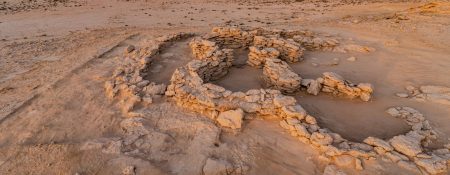Muraqqabat is one of the most well-known and historically significant neighborhoods in Deira, Dubai. Known for its central location, cultural diversity, and long-standing community vibe, Muraqqabat has played a vital role in the development of Dubai from a trading port into a modern metropolis. This article explores the history of Muraqqabat, the etymology of its name, and why it continues to be an important part of Dubai’s urban and cultural identity.
The name Muraqqabat (Arabic: المرقبات) is derived from the Arabic root “raqaba” (رَقَب), meaning “to observe” or “to watch.” Historically, the area is believed to have had watchtowers or observation points, hence the name. Its strategic location near the old trade routes and proximity to the early Dubai Creek area made it an ideal place for surveillance and transport-related activities.
Located in the heart of Old Dubai, Muraqqabat began to flourish in the 1960s and 1970s, during the early stages of Dubai’s rapid modernization under the leadership of Sheikh Rashid bin Saeed Al Maktoum. As one of the first neighborhoods in Deira to see organized urban development, Muraqqabat quickly became a popular residential and commercial hub.
It attracted a multicultural population, including expatriates from South Asia, the Arab world, and the Philippines. With its close proximity to Al Rigga, Union Metro Station, and the Dubai International Airport, Muraqqabat offered accessibility and convenience for residents and small businesses alike.
Muraqqabat holds significant value in the historical and social fabric of Dubai. Here’s why:
Modern Muraqqabat remains vibrant with a mix of traditional charm and urban convenience. The neighborhood is famous for its authentic Middle Eastern and South Asian restaurants, small cafés, and street food stalls that attract food lovers from across the city. Long-standing residents often describe Muraqqabat as a place where you can still feel the spirit of “Old Dubai.”
During special occasions like Ramadan, the area lights up with festive decorations, offering a nostalgic reminder of the community-centric traditions that continue to define this part of Deira.
Muraqqabat is more than just a neighborhood—it’s a living legacy of Dubai’s early urban history. For residents and visitors alike, it represents the heart of Deira, where Dubai’s past and present meet. Whether you’re interested in the city’s roots, exploring local food spots, or simply looking for an authentic experience, Muraqqabat offers a unique and enduring appeal.

The UAE’s rich history is rooted in trade and tied to Islam. Its unique location between Europe and the Far East became the crucial factor in it's growth into the world's largest trading hubs. Throughout the ages, these lands had attracted merchants from India and China, and were prized by Europeans, in particular the Portuguese, the Dutch and the British.
After the discovery of oil and the formation of the Emirates, the wise rulers began the rapid development of the country's economy, shaping it into what it is today. Though small in size, the UAE quickly became an important player in regional and international affairs.
Although it's growth and development, UAE heritage have not been forgotten - on the contrary, is still well-respected among the nationals. History and culture of local people can be felt in the legendary hospitality of local hotels, architecture of modern skyscrapers and openness and kindness in living among the multinational community.
Here you can read various articles about UAE heritage, history and culture, and better understand, why this country's development became such a success throughout the years.